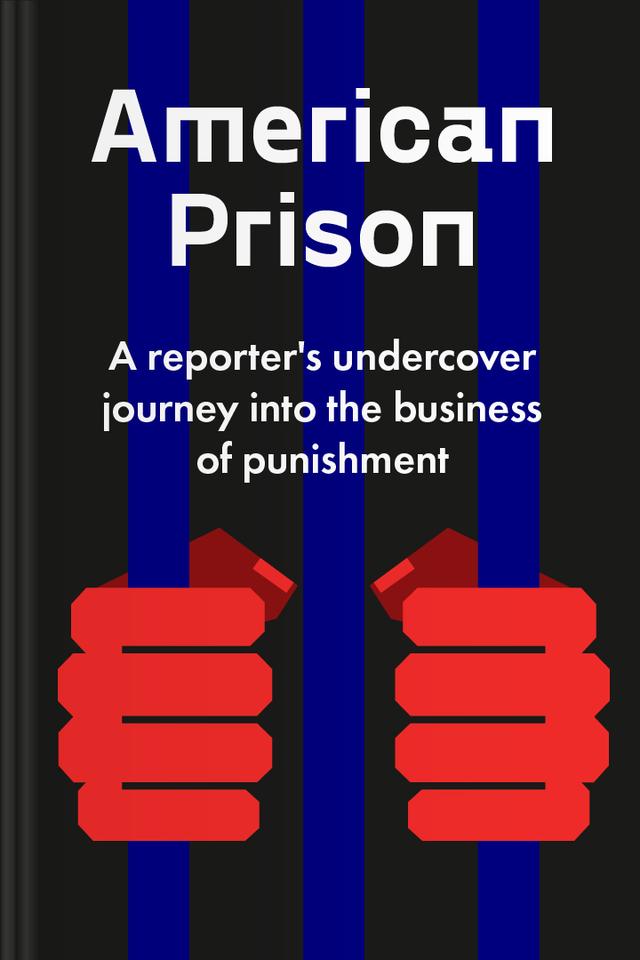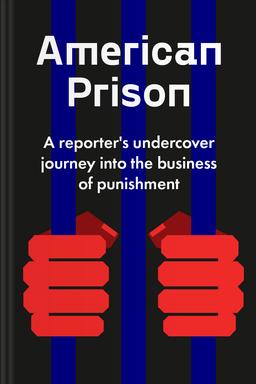You’ll learn
- How private prisons profit
- Why guards are also victims
- The ‘perks’ of forced labor today
- How prison changes a person
- If undercover reports make change
russia has launched a full-scale war in Ukraine. Donate to support Ukraine and protect the world’s peace.

first KEY POINT
There were about 1.5 million prisoners in the United States in 2016. That’s quite a lot, isn’t it? Yet rarely do our minds wander to the issues of the prison system and those who are incarcerated. This, of course, is perfectly natural, after all, prisons don’t usually make for the most pleasant small talk topic. Nevertheless, there are many discussions, especially in the U.S., about the need for prison reform. Is it truly such a pressing issue? After reading this summary, you’ll be able to answer that question for yourself.
Every detail in the following chapters is a part of Shane Bauer’s experience with the American prison system. As a diligent and highly professional reporter, Bauer took this investigation extremely seriously. Rarely are reporters and journalists allowed to see the true inner workings of American prisons and, even more so, American private prisons. Shane Bauer wanted to know the truth and, despite the risks, made a difficult decision to become a part of the prison system in order to expose it.Shane Bauer wasn’t an obvious choice for such a challenging task if you take into account his past—in 2009, he was incarcerated. While working as a freelance reporter in the Middle East, he was arrested by the Iranian authorities and held captive in solitary confinement for 26 months. The experience was traumatizing, to say the least, but perhaps that is what motivated him to go back to prison. He knew what it was like and how damaging incarceration might be. From his correspondence with former and current prisoners in American solitary confinement, he knew that the American prison system was no better than what he had gone through back in Iran.
Shane Bauer was adamant about exposing and changing the system, and this is what brought him to CCA, Corrections Corporation of America. This organization was responsible for running private prisons in the States. As part of the undercover investigation, he spent four tiring months in one of Louisiana's private prisons, working as a correction officer and a low-level prison guard, making a mere $4 per hour.In the following chapters, you’ll learn more about the workings and the harmful influences of a nightmare that is American private prison, the difficulties of Shane Bauer’s unusual experience as a prison guard, and the historical background that shaped America’s prison system.
second KEY POINT
In 1865, with the 13th Amendment to the U.S. Constitution, America proudly abolished slavery—this historical fact is splattered all over history textbooks. Why then, in 1956, a century later, were Black people still engaged in plantation labor and subjected to horrific punishments and living conditions in Southern states? The truth is, slavery didn’t disappear with a wave of a magic wand; it transformed into something more covert though no less cruel. Prison systems all over the U.S. grew out of slavery. The 13th Amendment had a rather helpful loophole that made forced labor possible; people could be forced to work as a punishment for their crimes.After being an accepted practice for many years, slavery became a habit that many relied on. When plantation owners found themselves without free working hands to order around, their businesses fell into disarray. The loophole in the Amendment was their “salvation.”Forced labor was much more productive and convenient for both state and private plantations, and the practice of turning plantations into prisons became fairly widespread very soon. Forced labor was presented as a highly effective method of correction and rehabilitation. Authorities claimed that lawbreakers could reevaluate their life choices through hard work and, therefore, better themselves while also working for the benefit of society and the economy.This explanation, of course, was a pretty guise for the awful exploitation of American citizens, primarily Black ones. Prisoners were driven to work hard not because they craved redemption but because they were made to by being tortured, abused, and denied basic necessities such as sleep and food on a daily basis.

Continue reading with Headway app
Continue readingfirst KEY POINT
second KEY POINT
third KEY POINT
fourth KEY POINT
fifth KEY POINT